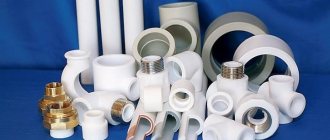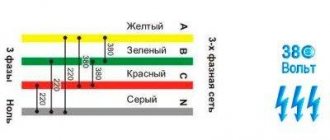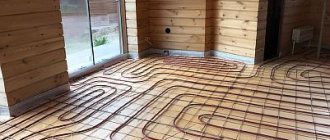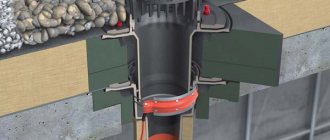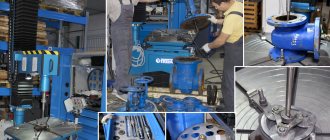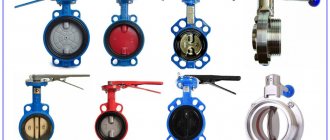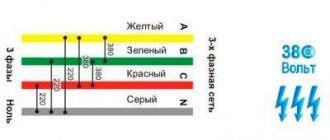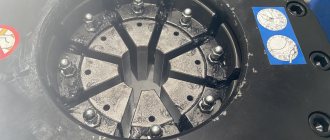Polypropylene is a white solid, a product of the polymerization of propylene and belongs to the class of polyolefins. Simply put, it is a plastic polymer with a wide range of applications. Today it is the most popular modern plastic due to its excellent consumer properties and versatility of use.
The material is obtained from propylene, whose formula is C3H6, as a result of the reaction between propene and a Ziegler-Natta catalyst. Thus, its chemical formula looks like this – (C3H6)*n. Today there are several varieties of this substance, they all have the same formula, but differ in spatial structure: isotactic, syndiotactic, atactic.
Each of them has its own physical and chemical properties. For example, an atactic polymer is characterized by fluidity and a low melting point, while an isotactic polymer, on the contrary, is elastic and dense and melts at 170 degrees Celsius.
Specifications
Today, polypropylene ranks second in the world market in terms of consumption, slightly inferior to polyethylene.
Let's consider its physical and chemical characteristics, which directly affect the scope of application.
Basic physical properties
- Low material density. Polypropylene has the lowest density of all plastics, which sets it apart from its denser counterparts.
- High strength. Numerous experiments have shown that it can withstand heavy loads, which far exceeds the capabilities of polyethylene.
- Low temperature resistance. The polymer copes well with negative temperatures, withstanding -10 degrees Celsius and lower temperatures.
- High temperature resistance. It can withstand not only low but also high temperatures, its melting point is 160 – 170 degrees Celsius.
- Resistant to sudden temperature changes. A quick change in temperature is also not a problem for this material. It withstands the rapid transition from minus to plus and back.
- Excellent dielectric properties. The high dielectric constant together with high dielectric strength provide wide possibilities for its use as an electrical insulating material.
- Easy processing. Polypropylene is easy to weld, cut, drill, and bends well, which significantly expands the possibilities of its use in industry and everyday life.
Chemical characteristics
- Resistance to chemical aggression. This feature of the material allows it to be widely used for the needs of chemical enterprises. It can withstand exposure to hot metal, various acids and fumes. In particular, this property is used in the manufacture of air ducts and ventilation for hazardous industries.
- Environmentally friendly and safe for the environment and humans. Numerous experiments have proven the non-toxicity and absolute environmental safety of this material for the environment and humans. Therefore, it is used in the production of water containers, as well as various liquids and bulk food products. Very often it is used in the construction of water purification facilities.
The main technical characteristics and properties of polypropylene are presented in the table.
| Basic properties of polypropylene | |
| Density, g/cm | 0,90 – 0,92 |
| Mass fraction of isotactic fraction, % | 95 – 98 |
| Mass fraction of atactic fraction, % | 2 – 5 |
| Tensile strength, kg/cm2 | 260 – 400 |
| Elongation at break, % | 200 – 700 |
| Melting point, Cº | 160 – 170 |
| Glass transition temperature, Cº | -10… — 20 |
| Degree of crystallinity, % | 50 – 75 |
| Frost resistance, Cº | — 10 and below |
| Thermal conductivity, cal/sec*cm*deg | 0,00033 |
| Specific heat capacity, cal/g*deg | 0,40 – 0,50 |
The abbreviation PP-RCT is a different material.
Which some refer to as the 4th type of polypropylene, although it is an improved third type of Random Coplymer.
This is heat-stabilized polypropylene, which has higher strength characteristics due to the fact that the number of faces in the PP-RCT crystal is greater than that of PP-R, which means the molecular bond is stronger due to the greater amount of contact between the crystals,
as a result, with the same pressure-temperature characteristics, the pipe can be made with a thinner wall and increase the throughput without increasing the outer diameter.
Such pipes also have much lower linear elongation with temperature changes. More resistant to ultraviolet radiation. And pipes made from this material can withstand temperatures of more than 100 degrees, versus 90 from PP-R.
This does not mean that all pipes can withstand temperatures of 100°C. Each manufacturer keeps the composition of polypropylene a secret, so before installing a pipe in your system, familiarize yourself with the characteristics and service class of this pipe.
But this is the topic of a separate post and I will of course check it.
Scope of application
The production of polymer materials was a real breakthrough in its time. Low cost and excellent physical and chemical properties of polypropylene have contributed to the development of many industries. Thanks to the introduction of new technologies, it was possible to increase production efficiency and replace many expensive materials with more modern and progressive ones.
Polypropylene has served as the basis for the production of many modified materials, including high-strength plastics and mixed thermoplastic elastomers.
New high-tech materials are environmentally friendly and can be easily recycled and disposed of.
All this contributes to the fact that polypropylene is gradually displacing materials such as polyvinyl chloride, ABS plastic, polystyrene and others from the market. Widely used in all key sectors of the modern global economy: electronics, mechanical engineering, construction and many others. Largely for this reason, polypropylene has received the popular name “king of plastics.” And although it is not yet a leader in its segment, its scope is gradually expanding.
Polypropylene recycling
Nowadays, there are five main ways of processing polypropylene - extrusion, blowing, injection molding, foaming, molding.
Processing methods such as casting and extrusion are the most popular at present. Under their influence, extruded and injection molded polypropylene is obtained.
Extruded is made in the following way: polypropylene powder or granules are loaded into a chamber heated by steam, and the compound is squeezed out of it through a molding hole. As it leaves the reactor, the polypropylene hardens.
Molded polypropylene is produced by heating powdered/granular polypropylene without access to air, creating a viscous, fluid substance, then it is transferred to a mold where hardening occurs.
Packaging materials and polypropylene fibers
Polypropylene is widely used in packaging. For example, polypropylene films are perhaps the most popular packaging material in the world. In some ways they are similar to polyethylene, but in some respects they even surpass it. The main advantages of polypropylene film over polyethylene are as follows:
- better resistance to high temperatures and aggressive substances;
- excellent consumer properties - transparency, strength, flexibility and environmental friendliness;
- best presentation characteristics.
Not long ago, so-called oriented films appeared on the market; a special production technology made it possible to significantly improve the already excellent qualities of polypropylene films. For example, the transparency of oriented film is four times better than that of conventional polypropylene material.
In recent years, polypropylene has become often used in the production of plastic containers - bottles, cans and other containers, as well as lids for them. In addition, it is used for the production of various containers and tanks for transporting chemicals.
The low cost of polypropylene fibers has ensured their widespread use in the textile industry.
Having a low cost, they are characterized by high strength and good elasticity. Another advantage of these synthetic fibers is their excellent heat resistance. Their only significant drawback is sensitivity to ultraviolet radiation, which somewhat hinders the widespread distribution of polypropylene fibers.
Temperature and marking
You can find out what temperature the products can withstand by looking at the markings:
- PN 10. This model is perfect for cold liquids. Polypropylene pipes and RTP fittings for internal sewerage and water supply are designed for temperatures up to 450C.
- PN 16. Can be used both for cold coolant and for supplying liquid to the heating system. Water heating can reach 600C.
- PN 20. Water temperature can range from 0 to 800C. This characteristic allows them to be used for heating systems.
- PN 25. A distinctive feature is reinforcement, due to which the model is able to withstand high pressure and temperature. The product marked PN25 can withstand heating up to 950C. Reinforcement can be done with several materials (more on this a little later).
Important! It is worth knowing that there is a direct relationship between price and labeling. The higher the number after PN, the more expensive the product will be. Therefore, it is not necessary to purchase pipes marked higher than PN10 for cold water supply and sewerage. But for heating systems you should choose PN16, 20 or 25 products.
What does reinforcement affect?
In order to obtain good heating of the room, a return pipeline is installed in the apartment and the water heating is increased by 100C. As heating increases, the material loses its properties and expands in diameter. If the temperature rises significantly, the product may burst. This is especially dangerous when installing communications in a concrete screed. It leads to:
- Cracking of concrete.
- Heating system leaks.
In order to reduce the expansion coefficient, manufacturers reinforce pipes - they enhance the load-bearing capacity of polypropylene with another material:
- Aluminum foil, which is applied to the outer surface.
- Aluminum, which is located inside the product, closer to the outside (in particular, Valtec PP-ALUX pipes).
- Fiberglass (for example, Valtec PP-Fiber pipes).
- A composition of fiber and glass fiber.
In addition to reducing thermal expansion, reinforcement helps maintain the strength of the material during significant heating. Even if the liquid heats up to 1200C, the product will not burst, as will happen with non-reinforced analogues.
Experts recommend choosing products reinforced with fiberglass. At the same cost, such models have a number of advantages:
- No edge cleaning required before installation.
- They have a short soldering time (same as non-reinforced analogues).
- There is no internal delamination of the material.
Polypropylene pipes with fiberglass comply with the PN25 marking, and therefore can withstand temperatures up to 950C while maintaining their thickness. The critical temperature for such products is 1200C. The material can withstand short-term heating, but with constant exposure, the product’s lifespan is significantly reduced.
Let's sum it up
We found out that products for cold water supply are designed for temperatures up to +450C, for hot water – from 60 to 950C. When choosing communications for your home, it is important to consider several characteristics:
- Type of water supply (cold/hot).
- Temperature difference in the apartment in winter and summer at the place where communications are installed.
- Heating type and building code requirements.
Knowing these parameters, you can choose the most suitable type for a particular case without overpaying for a more expensive option.
Application in mechanical engineering and electronics
The widespread use of the material in mechanical engineering, automotive and construction was facilitated by its high wear resistance. Many components for household appliances - refrigerators, vacuum cleaners, washing machines - are made from polypropylene. This synthetic material is also used in the production of cars. In particular, it is used to make interior parts, bumpers, shock absorbers and much more.
In electronics, it is used to produce housings for televisions, telephones, coils, lamp sockets, elements of switches - it is simply impossible to list everything. It's easier to say that polypropylene surrounds us everywhere in everyday life.
The nuances of using polypropylene pipes
You can also use products made from polypropylene. The melting point of such pipes can be different. This must be taken into account if you are looking at PN20 brand products. In this case, we are talking about a pipe whose operating temperature reaches 60 °C. But if we are talking about a PN25 product, then this indicates that it will be able to withstand temperatures up to 95 °C.
Goods for children
The exceptional safety of the material allows it to be used for the production of children's products.
Dishes, household items, toys and many other products for little ones are made from polypropylene.
The combination of several of its properties - environmental friendliness, high wear resistance, strength - determine its widespread use in everyday life.
World consumption of polypropylene is increasing every year. Its share in the production of consumer goods is steadily growing. It is gradually capturing new market segments, displacing less technologically advanced polymers, primarily polystyrene and PVC. Inferior in terms of environmental friendliness, they are gradually losing their position in the global market. Under public influence, European legislators are slowly but surely clearing the way for new technologies. Such important indicators as non-toxicity and easy disposal confidently make it a leader.
Another important factor contributing to the growing popularity of the substance is its low price compared to its competitors. Cost is the determining criterion in the production of any product, and therefore manufacturers are increasingly turning their attention towards cheaper and more technologically advanced materials.
The prospects for this high-tech material are very bright. It is obvious that its percentage in world consumption will increase. This is facilitated by constant research and the emergence of new technologies and modifications of polypropylene. Most likely, this will continue until more advanced synthetic materials appear, but even then propylene will be widely used in industry and the national economy.
Chemical properties of polypropylene
Polypropylene, a relatively chemically resistant material. It does not react with most acids, which allows it to be widely used in the chemical industry, especially when installing ventilation ducts, in chemical and industrial plants.
Strong oxidizing agents such as nitric acid, oleum, and halogens have a more significant effect on polypropylene. Concentrated sulfuric acid and hydrogen peroxide react only with prolonged contact and at a temperature of 600 C, they lead to the destruction of the material.
Numerous studies have shown that polypropylene has high environmental and human safety indicators. It will not release harmful substances into the environment. It can be safely, without fear of poisoning, used to make containers for drinking water and food.
Melting point of polypropylene pipes
The melting point of polypropylene pipes is one of those characteristics that is most often of interest to the modern consumer. This material will begin to soften at 140 °C, while melting at 175 °C. The last parameter is the temperature of the superheated steam. If we take this number into account, then polypropylene could be used for any plumbing system that transports water at an arbitrarily high temperature.
But this issue is not so simple. An additional feature of the material is plasticity. When broken, polypropylene has a relative elongation that varies from 200 to 800%. This indicates that if a certain weight is applied to the pipe, the product will stretch into a long tube and then break.

